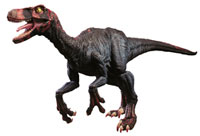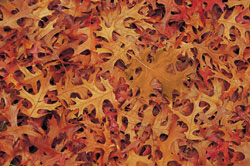|
Protect images - FAQ
Image Guardian FAQ & Troubleshooting
Q: How to purchase Image Guardian?
A: You can't purchase the Image Guardian
standalone, it's an add-on to HTML Guardian.
To
protect images
on your website, you have to purchase
HTML Guardian Enterprise Edition.
In HTML Guardian Personal and Professional Editions, the Image Guardian
functionality is limited.
Q: My images are not protected. What's the problem?
A: First make sure that the Image Guardian
is enabled.
Read carefully about the Image Guardian limitations.
Configure the Image Guardian to run in Safe
Mode.
Image Guardian will not protect images in the following cases:
- image is smaller than the defined minimum
image size.
- you specified that this image
should not be protected.
- image is not included in the html file with the <IMG...> tag .
- image is included in the html file with an absolute path, like <IMG
src = "http://www.mydomain.com/mycat.jpg">.
- image is included in the html file with a relative path, but is not
available at the specified location. If the image is included in the
html file like <IMG src = "mycat.jpg">
but the mycat.jpg file is not available in
the same folder where the html file is, it will of course remain unprotected.
- you are using HTML Guardian Personal Edition or HTML Guardian Professional
Edition, where Image Guardian functionality is limited.
Image Guardian is fully functional only in HTML Guardian Enterprise
Edition.
If none of the above solves the problem, remove all
empty spaces and special characters from image files names and
from the names of the folders where the images reside. Let's see an
example:
We have a .htm file in which we have included an image named my
cat.gif,
which resides in a subfolder named my pets.
So the IMG tag to display my cat.gif will look like
<IMG src='my pets/my cat.gif'>
Some HTML editors transform the empty spaces and special characters, so
in some cases the tag may look like
<IMG src='my%20pets/my%20cat.gif'>
(the empty space is transformed to %20)
If this is the case, rename the folder my pets to my_pets or mypets
Rename the file my cat.gif to my_cat.gif or mycat.gif
Update the html source so that the IMG tag points to the renamed file:
<IMG src='my_pets/my_cat.gif'>
Make sure the src attributes of all IMG tags
do not contain
empty spaces or special characters. We recommend to use only English
letters (A-Z,a-z), numbers (0-9) and underscores ( _ ) for file and folder
names.
Q: I have the same image included
in many files. If I use the random names option, will Image Guardian
split this image into different pieces each time?
A: No.
Image Guardian remembers the images protected in the current session,
it will not generate new image pieces for an image that was already
protected in the current session (after HTML Guardian was started)
-
it will use the existing, already generated pieces and the same encrypted
code to display the protected images. But if you use the same image
in
let's say two files, you encrypt the first file, then you restart HTML
Guardian and encrypt the second file, Image Guardian will generate
new
image pieces.
That's why it's recommended to encrypt all files of your site at once
- this way you will avoid protecting some image several times. This
is an important thing to consider when you protect images of your
website.
Q: Sometimes the page layout
changes and some page elements are transposed after I protect the images.
Why is that and how to avoid it?
A: This could happen sometimes if
you have two or more images next to one another like this:
 
or an image with a text next to it, like this:
 This is some
text next to the image This is some
text next to the image
In most cases this can be fixed if you check "Enable
smart detection" box.
Note that smart detection may remove empty spaces around the IMG tags.
If this causes undesired changes in the page layout, replace empty spaces
with a non-breaking space (
)
Like this: change <IMG src = 'cat.jpg'>
This is my cat! to <IMG
src = 'cat.jpg'> This
is my cat!
If the results are not satisfactory, disable smart detection and follow
the instructions below.
If the page layout changes ( in most cases the page element that is
next to the image will go underneath the image after the image is protected
), you should put the page elements that you want to appear horizontally
next to one another in a table. For the first example with the two images,
the html code that displays them will normally look like:
<img src="dino.jpg"><img
src="autumn.jpg">
If you put those two images inside a table, the code to display them
should look like
<table border="0" cellspacing="0"
cellpadding="0">
<tr>
<td><img src="dino.jpg"></td>
<td><img src="autumn.jpg"></td>
</tr>
</table>
If you put the images to be protected inside a table ( which is a good
practice anyway ), the page layout will not change and the page elements
will not be transposed after you protect images on your site.
|

